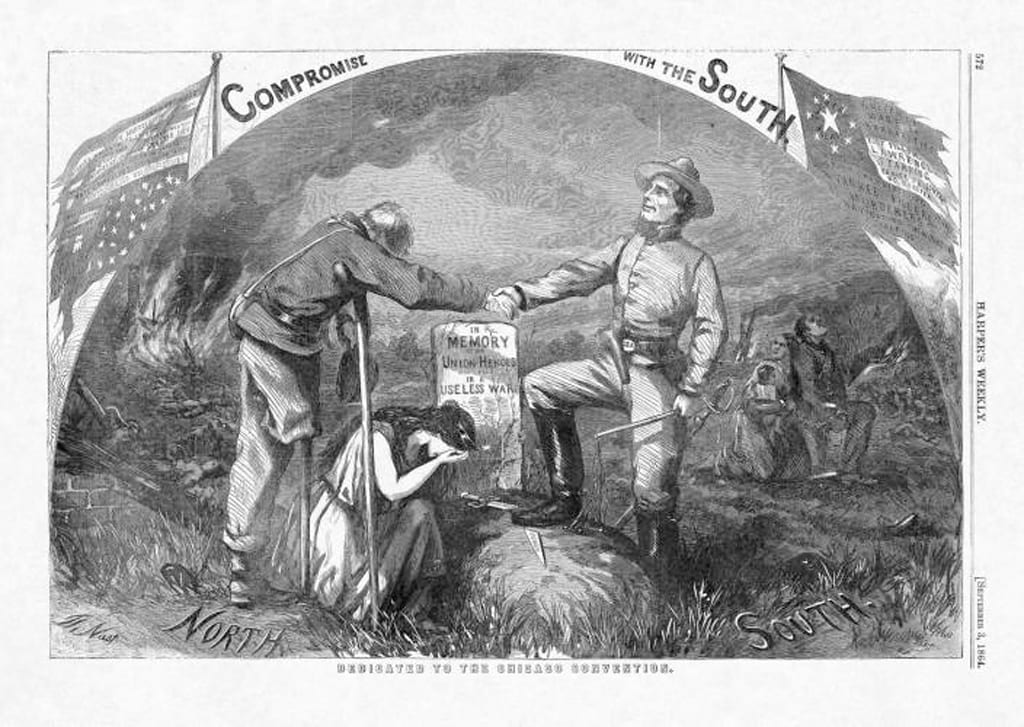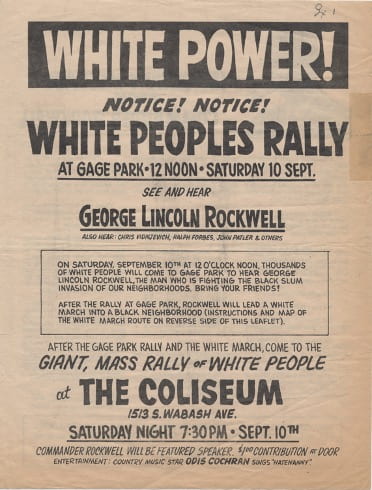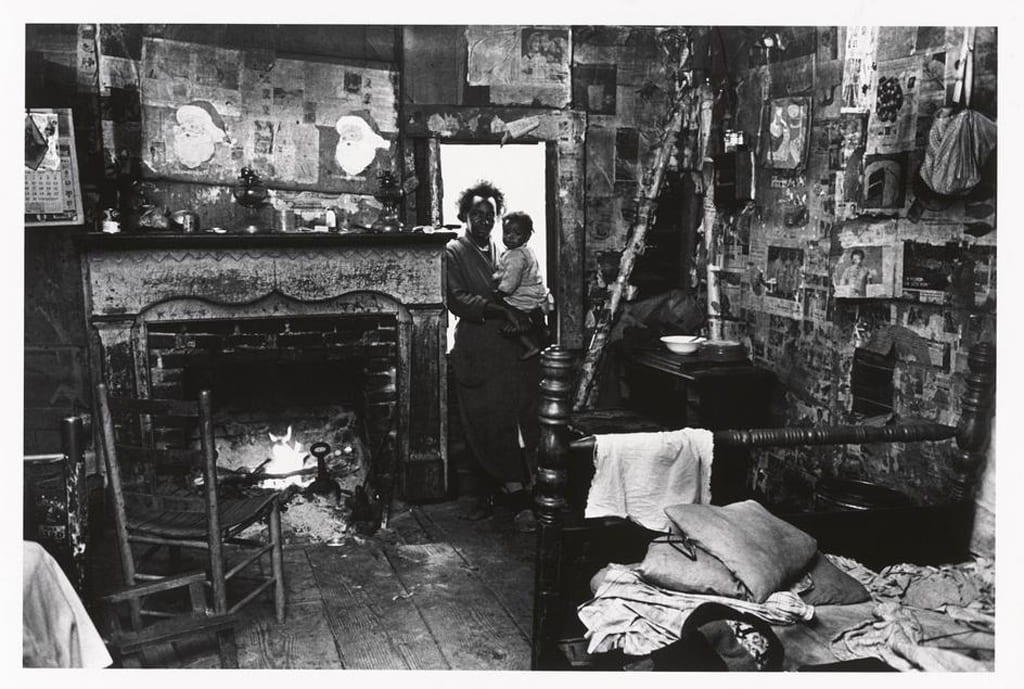Another grouping of prints, photographic works, digital media, and other artifacts revisit this era of American apartheid, a key sociological bridge between present injustice and that of the distant past. In the illustration Dedicated to the Chicago Convention (1864), Thomas Nast warns of the threat of Confederate victory and an associated continuation of racial terror, hoping to build Union resolve to win the Civil War. Today his rendering can be mistaken as memorializing the Compromise surviving that war. Assorted nineteenth- and twentieth-century newsclippings in the center of the gallery present material evidence of this still-unreconstructed political culture, including a masthead from The Weekly Caucasian, a newspaper published on the outskirts of Missouri’s “Little Dixie” region from 1866 to 1875, which was explicitly pledged to white supremacy.
In another of Nast’s illustrations, Patience on a Monument (1868), a black Union veteran waits atop a stele listing several cases of racial terror in the period, his family lying slain below. Adjacent screens reproduce the photographic memorabilia of a cross section of white civic actors implicated in several lynchings between 1885 and 1935. Forbearance of their racial terror was such that many of these photographs became postcards, circulated through US mail. Similar to Ken Gonzalez-Day’s 2006 photographic exhibition Erased Lynchings, the selected images exclude lynching victims in order to focus on the men, women, and children committing and consuming the atrocities.
The era’s less spectacular yet more ubiquitous lethal structural and cultural violence is captured in photographs by Bruce Davidson, Lewis Hine, and Madeleine Osborne, as well as other objects of visual culture that comprise this grouping. It closes with Thurgood in the Hour of Chaos (2009), in which the artist Rashid Johnson—dressed as “Mr. Civil Rights” (Thurgood Marshall)—pays homage to “Black Steel in the Hour of Chaos” (1988), a song by Public Enemy (PE) protesting state violence. An overlay of PE’s crosshair logo onto the image of Johnson-as-Marshall suggests the ongoing construction of black Americans as enemy threats that must be contained and eliminated.
Image credits:
Thomas Nast (American, b. Germany, 1840–1902), Dedicated to the Chicago Convention, from Harper’s Weekly, September 3, 1864. Engraving 9 1/4 x 13 3/4″ (plate). James E. and Joan Singer Schiele Print Collection, Rare Book Collections, Washington University in St. Louis.
Thomas Nast (American, b. Germany, 1840–1902), Patience on a Monument, from Harper’s Weekly, October 10, 1868. Engraving, 13 3/4 x 9 1/8″ (plate). James E. and Joan Singer Schiele Print Collection, Rare Book Collections, Washington University in St. Louis.
Detail from photograph of a lynching in Bristol, Virginia, c. 1885. Loewentheil Collection of African-American Photographs, Division of Rare and Manuscript Collections, Cornell University Library. Artstor.com (15085541.fpx).
Poster promoting George Lincoln Rockwell’s “White People’s Rally,” Chicago, September 10, 1966. Chicago History Museum (ICHi-037344-A).
Bruce Davidson (American, b. 1933), Mrs. Annie Blackman holding baby Felicia inside her sharecropper cabin, near Selma, Alabama, 1965, printed later. Gelatin silver print, 8 x 11 7/8″. Mildred Lane Kemper Art Museum, Washington University in St. Louis, Gift of Jan and Ronald Greenberg, 2012.
Lewis Hine (American, 1874–1940), Untitled, c. 1920. Gelatin silver contact print, 5 × 4″. Mildred Lane Kemper Art Museum, Washington University in St. Louis, Gift of Nicholas Vahlkamp, 1994.
Madeleine Osborne (American), Untitled (Belle Glade, Florida), 1945. Gelatin silver print, 8 1/4 x 10″. Mildred Lane Kemper Art Museum, Washington University in St. Louis, University purchase, St. Louis Printmarket Fund, 1993.
Rashid Johnson (American, b. 1977), Thurgood in the Hour of Chaos, from the portfolio America America, 2009. Photolithograph, 47/50, 29 5/8 x 22″. Mildred Lane Kemper Art Museum, Washington University in St. Louis, Gift of Exit Art, 2013.







